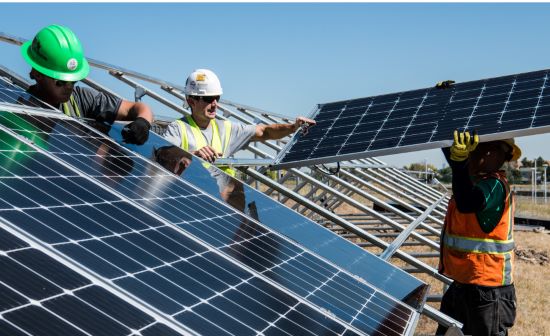US president Joe Biden is planning a multi-billion-dollar clean energy initiative. Here, John Fitzgerald looks at the impact on the US construction industry and whether it can deliver.
No matter how we face our current economic and social challenges, our future depends on reining in climate change. Joe Biden’s clean energy initiative is in many ways a step in the right direction.
As green advocates have long suggested, eco-friendly legislation can drive business without restraining markets and Biden’s plan promises infrastructure projects that create millions of jobs for skilled tradespeople, construction workers and engineers. With plans to invest $2 trillion into infrastructure, housing, building construction and other projects, this initiative provides many opportunities for the construction industry.
A shift to green construction is inevitable and necessary, as building operations have been shown to cause 28% of all US carbon emissions. Embodied carbon also has a significant impact on our environment and represents 11% of greenhouse gas emissions globally. To compensate, building owners have expressed their desire to incorporate green construction techniques and to meet sustainability goals. In the largest markets, 13.8% of office buildings are green certified.
However, if this is true, why do 55% of contractors believe a Biden presidency could harm the construction industry? As vital as climate-friendly policies are, the construction industry is grappling with rising material costs, a reduction in mega-construction projects and fewer skilled workers to hire. Without striking a balance between eco-friendly and business-friendly policies, forcing sustainability initiatives could deal a major blow to a construction industry that is already dealing with post-pandemic recovery.
Time is money
Total construction spending rose 5% ($667.9bn) in the first half of 2020, but prospects dropped dramatically as non-essential businesses closed during the pandemic. Many commercial sectors, like retail and hospitality and office space, are still suffering, but the rising demand for life sciences facilities and data centres have helped boost construction activity. With more people working from home, the need for data centres should rise by 9% this year alone, while the push for a Covid vaccine meant life sciences firms needed 11 million square feet of new construction, an increase of 13%.

While the life sciences and data centre sectors continue to fuel construction demand, Biden’s clean energy plan would create even more projects, including the green retrofitting of current buildings. In doing so, delays may be created on other sites, especially if green retrofitting jobs are being prioritised.
If labour were plentiful, projects could simply be staffed up to complete multiple commissions at once, but 90% of construction firms are concerned about labour shortages. And since clean construction projects require specific skills, and 57% of contractors are struggling to hire skilled labour, the manpower to deliver on both green projects and existing life sciences and data centre commissions on time just isn’t there.
Money matters
While green construction projects promise excellent long-term value, sustainable building techniques can often cost 1-2% more up front, on average, when compared to similar projects. Eco-friendly retrofits can cost up to $7 per square foot. This rise in overheads, coupled with the increased costs brought on by labour shortages and Covid-19 safety regulations, presents significant challenges to project budgets and timelines. With the new push to buy American even as construction material costs are climbing, there are few ways for developers and contractors to drive down costs elsewhere.
With the availability of retail and hospitality contracts not expected to recover until mid-2021, many contractors may take on more of the government’s clean energy projects. While Biden has proposed additional funding and relief efforts, this may not be enough to offset his plans to raise corporate tax rates to 28% and to end the 1031 Exchange.
Sustainability v survivability
With buildings and construction generating huge amounts of carbon emissions in American cities, it is critical to support sustainability initiatives and reduce the carbon footprint of construction projects. But while the economy is still struggling to recover from the pandemic and weather the recession, lawmakers must account for the needs of businesses when planning a green future.
In order to prepare for these impending initiatives, the construction industry should focus on implementing more sustainable building methods, while supporting strategic planning to increase efficiency across budgets and timelines.
John Fitzgerald is a project director at global construction consultancy Linesight, specialising in project and cost management.

